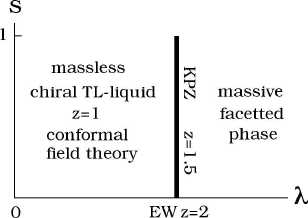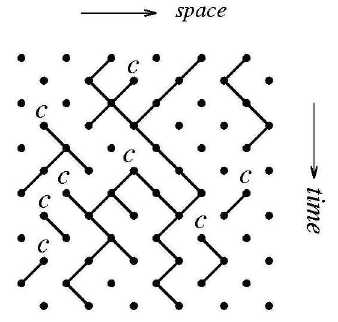CROSSOVER SCALING BETWEEN DYNAMIC UNIVERSALITY CLASSES.
|
Marcel den Nijs, in the Proceedings of the 4th CTP Workshop on Statistical Physics: Dynamics of fluctuationg Interfaces and Related Phenomena eds. D.Kim, H.Park, and B.Kahng, pages 272-292 (World Scientific, 1997). Per Frojdh and Marcel den Nijs, Phys. Rev. Lett. 78, 1850 (1997). John Neergaard and Marcel den Nijs, Phys.Rev.Lett. 74 730 (1995). |
crossover scaling z-theorem
Crossover scaling between dynamic universality classes implies a link between the dynamic exponents of the two and the crossover exponents at the unstable process. I named this the z-theorem .This property is especially useful when the crossover field is a a redundant stress tensor type operator for the stable process and the unstable one has known scaling properties, such that its dynamic exponent and the crossover exponent are known exactly. An example is the crossover between Edwards-Wilkinson and KPZ type growth. In 1D, the KPZ dynamic exponent is therefore simply equal to z(KPZ)=z(EW)-y(cr)=2-0.5=1.5. In higher dimensions this does not work, because EW growth becomes stable and an intermediate unstable fixed point separates it from KPZ growth. |
The edge of conformal field theory
D dimensional dynamic processes that can be formulated as Master equations are intrinsically related to time evolution operators in quantum field theory and transfer matrices of D+1 equilibrium statistical mechanics.One example of this equivalence is the exact mapping between 1D KPZ growth and facet-ridge end-points in 2D equilibrium crystal shapes .
|
|
 spin-half quantum chain phase diagram percolation cluster |
home page of Marcel den Nijs